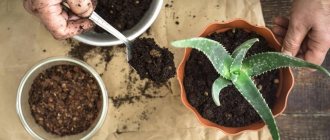It is enough to have just one Uzumbara violet on the windowsill to become an ardent fan of this beautiful plant. At the same time, interest very quickly appears in all the specimens growing among friends and relatives.
Collecting violets is a popular and exciting activity. Every year, many new varieties and hybrids of this plant appear in stores, striking even sophisticated flower growers with their unearthly beauty. But to replenish your collection with a new variety, it is not necessary to buy a new adult violet. You can ask your friends to share a flower.
This plant is easily propagated by dividing the bushes. But if you need a large number of rosettes, then it will not be superfluous to know how to grow flowers from a leaf in order to share the beauty with other lovers.
Young violets can be obtained quite easily from one leaf blade. But there are small subtleties that need to be taken into account in order to avoid annoying mistakes.
Violet
Indoor violets are rooted with different fragments of the plant, but only leaf propagation produces several young shoots at once. To do this, take a container with holes in the bottom and a drainage layer consisting of expanded clay, pebbles or other available material.
Then it is filled with ready-made soil purchased in the store, or a substrate is made up of equal parts:
- turf soil;
- leaf humus;
- high peat;
- gravel.
The soil mixture is slightly moistened and a violet leaf cut from the middle tier of the rosette is placed on it. Too young leaf plates from the top or lower (old) ones are not suitable for rooting.
The planting material is cut across the veins in several places with a sharp (disinfected) blade and carefully pressed against the ground. You can even pin it with a toothpick so that the contact area is larger.
The container is covered with polyethylene (glass) and placed in a warm place, providing sufficient lighting.
After 1-2 weeks, tiny rosettes will appear at the incision sites. Periodically, the mini-greenhouse is opened so that the plant can breathe and condensation does not accumulate.
Streptocarpus
An elegant competitor to Saintpaulias and one of the most beautiful plants of the Gesneriaceae family, Streptocarpus captivates with the beauty of its pubescent, large lanceolate leaves with interesting wrinkles and graceful watercolor flowers rising on thin purple pedicels. It is most often propagated by seeds and division, but young leaves with small cuttings, and even their fragments, take root successfully:
- strips about 5 cm long, cut strictly perpendicular to the midrib (the upper and lower parts must be discarded);
- a leaf cut longitudinally along the central vein.
After drying, the leaves or parts of the leaf are planted vertically, cut down, buried 1/3 in light soil, sprayed with fungicides and placed under a hood. Good lighting and warmth are important for streptocarpus. The leaves take root in 1-1.5 months, young rosettes are planted after the formation of strong roots and growth.
Begonia
Any variety of begonia can be easily rooted using a cut leaf with a cutting - it can be placed in soft, clean water or directly planted in the soil.
In order to obtain several shoots at once, the leaf plate, as in the case of violets, is laid on moist soil and transverse cuts are made.
Begonia prefers light, nutritious soil with good permeability to moisture, air and a slightly acidic reaction (pH - 5.5-6.5 units).
If you do not have the opportunity to buy ready-made soil, you can make it yourself. To do this take:
- 2 parts leaf turf;
- 2 hours of high-moor peat;
- 1 tsp coarse river sand;
- 1 teaspoon of matured compost or humus.
The soil is slightly moistened and maintained in this condition until roots 2-2.5 cm in size appear on the planting material.
Reproduction by part of a leaf
This is the common propagation method for Mason begonia, royal begonia, sansevieria, streptocarpus, aloe and other plants, mainly succulents. Sansevieria leaves are cut into pieces up to 5 cm long; in begonia, part of the leaf with a base is up to 4 cm, and planted in moist, warm sand or a very loose substrate made from a mixture of leaf soil and peat.
To prevent the leaf from falling flat on the soil, a supporting stick is placed under it. At high temperatures (30-32°C), careful watering, and good lighting, pieces of leaves take root and form a young plant. When propagating by part of a leaf, higher soil and air temperatures are allowed, because the evaporating surface of the plant is much smaller.
What’s noteworthy is that when dividing a leaf into parts and planting, it doesn’t matter which side a fragment of a leaf is placed in the ground - where the bottom or top was, it doesn’t matter, even if you plant a piece of leaf “upside down”, it will still give roots. The success of rooting cannot be called one hundred percent; often only half or a third of the planted fragments of leaves take root. Some rot, others dry out. Based on my own observations of the rooting of fragments of Sansevieria leaves, I can note that pieces of leaves planted in pure vermiculite took root better. The only explanation I find is that vermiculite does not have organic elements, i.e. does not rot, absorbs water well and releases it when necessary. No special care is required, just occasionally spray the leaves and substrate. But later, when young leaves grow, replanting into the ground is necessary, and here there is a danger of losing the plants. The roots formed by cuttings in water and vermiculite have many fluffy root hairs, they are also called water roots. When planted in the ground, they quickly dry out, and the plant’s growth is severely retarded and sometimes dies. Therefore, when planting in a pot, you need to make a hole in the ground and plant a leaf with roots there along with a piece of vermiculite (without shaking the roots). After transplantation, shade from the sun for the first days.
Crassula
Like all succulents, the crassula, or money tree, takes root easily with the help of any fragment separated from a mature plant. It is enough for a fleshy leaf cut from the crown to touch the moist soil.
In order to root a Crassula leaf, you don’t have to put in much effort. A plant completely covered with aerial roots has high viability.
You can buy a substrate for a succulent at a flower shop or prepare it yourself from equal parts:
- turf land;
- humus;
- vermiculite;
- gravel.
A prerequisite is that the soil must be well drained, because... Money tree does not tolerate excessive moisture.
Sansevieria
Deservedly included in the list of the easiest crops to propagate, Sansevieria , with its tough leaves decorated with variegated ripple patterns, does not take root very quickly, but is almost guaranteed. Both plants with flower-shaped rosettes, and the more popular cylindrical sansevieria, and “pikes” root in the same way - with parts of the leaves.
Large whole leaves are cut transversely into “columns” from 5 to 12 cm long. To preserve the variegated colors of the variety, all the “green” parts of the leaf are cut out; for simple plants such tricks are not necessary. The sections must be dried. Sections of Sansevieria leaves can be rooted in water, but a more reliable method is in soil or sand, immersing the leaf about a third of the height, vertically or at a slight angle, observing the direction of growth. Rooting in Sansevieria takes only a few weeks, but the formation of daughter plants ready for separation will have to wait up to 4 months.
Ficus
Even a novice gardener can cope with the propagation of ficus. The leaf plate is separated from the crown with a sharp, disinfected knife.
During this process, a thick, sticky juice begins to secrete at the cut site, which should be washed with warm water. The sheet plate is left to dry for a couple of hours.
Then several shallow longitudinal cuts are made at the base of the cutting, this stimulates the growth of young roots. The prepared sheet is placed in a jar of clean water at room temperature.
In order to speed up the process of root formation, cover the container with a plastic bag. The mini-greenhouse is sometimes ventilated.
Bulbs
What indoor plants are good for your health?
Bulbous plants are divided into two groups: evergreen (crinums, etc.) and deciduous, with a more or less long cessation of growth - a dormant period (lilies, hyacinths, daffodils, tulips, etc.). These are widespread, very valuable plants, propagated for forcing in winter, for cutting and for beautiful flower decoration in gardens and parks. Bulbs of evergreen plants are separated, like root suckers, in the spring after flowering. Planted in pots in light soil. Later, after rooting, they are transferred to heavier soil. Bulbs of deciduous plants used for indoor forcing are selected at the end of summer after digging from open ground, dried in the shade for a month and planted in pots in the fall. According to the structure of the bulbs, they can be filmy (hyacinths, tulips, daffodils) or scaly (lilies). In membranous bulbs, “baby” bulbs are formed on the sides from the axillary buds; In this case, the uterine bulb is greatly depleted and even disappears.
To get as many “baby” bulbs as possible, old, faded hyacinth bulbs are cut crosswise from the bottom, hollowed out or drilled out at the bottom, or simply cut out the middle part of the bulb. This technique destroys the middle bud, instead of which several baby bulbs are formed, and the bulbs disappear.
The bulbs of each variety, dried in summer, are planted in separate pots. Pots with planted bulbs are placed in a dark room with an air temperature of 6–8 ° C and good ventilation, covered with sand, peat chips with a layer of 10–12 cm or covered with moss. Watering is usually not necessary. The bulbs begin to grow 40–50 days after planting. They should be moved into the room only when the sprouts reach 5 cm in height and good rooting occurs (with earlier forcing, about 30–40, with later forcing, 10–15 days before the desired flowering date). In the first 10–15 days of forcing, the plants must be covered with cups of opaque paper or overturned pots in order to slow down the growth of leaves and promote a faster emergence of flower shoots. It is also necessary to cover the sprouts for the following reasons: when transferred to a room, the plants immediately find themselves in a drier atmosphere, and under the hood the air is more humid, so that they gradually get used to the air of the room, and also become accustomed to the transition from darkness to light.
The temperature for forcing in the first 2 days is 12–13°C, then 22–24°C. This can be achieved by placing the pots on the windowsill further or closer to the heat source. Flowering plants need a temperature of 8–10°C. In such conditions, flowering will last longer.
Forced plants should be watered regularly, but very carefully, from a watering can without a sieve, along the edge of the pot, so that water does not get between the leaves into the neck of the bulb, which can cause the plant to rot and die. After flowering, the bulbs are left in pots until the foliage completely dies, then transplanted into open ground. The suitability of the bulbs for forcing is determined by the degree of their development
The suitability of the bulbs for forcing is determined by the degree of their development
In this case, not only the size of the bulb is taken into account, but also its weight. Lightweight bulbs, although large, are not used for forcing, but for spring flowering on the balcony, in the winter garden or flower bed. Propagation of bulbs of tulips, daffodils and other bulbous plants is carried out in the same way, but only mechanical damage to the bulbs (incision, gouging) is not used.
Propagation of bulbs of tulips, daffodils and other bulbous plants is carried out in the same way, but only mechanical damage to the bulbs (incision, gouging) is not used.
Scaly lily bulbs easily reproduce without outside help and produce a large number of “babies”. Lilies can also be propagated from bulb scales, stem leaves and stem layerings.
Home — Propagation of indoor plants — Division by tubers and corms
How to trim a cutting correctly
On a plant that is planned to be propagated by cuttings, the desired branch is cut off. For a cut branch, an oblique cut must be immediately made under the lower bud, and the leaf must be removed.
When cutting from indoor plants that have milky sap, such as ficus, you must place the cut cutting under running water until the sap stops flowing.
The cut cuttings must have at least one or two buds, from which a new young plant will subsequently grow. It is not advisable to dwell on the question of the number of buds on a cutting. Ficus can be propagated by cuttings with one single bud, but in this case the chances of getting a new plant will be much less than with cuttings with two buds.
What plants reproduce using creeping shoots?
Reproduction by creeping shoots
- "Usami" Creeping tenacious Strawberry Cereals - some species Cinquefoil Cranberry Chlorophytum
- Layerings Raspberries Blackberries Gooseberries
- Tubers Potatoes Jerusalem artichoke Dahlia, sweet potato
- Rhizome
- Bulbs of Narcissus Snowdrop
Interesting materials:
Why does the geyser go out during operation? Why am I always cold? Why is it that the hero of our time ends the story with a fatalist? Why is Chinese New Year at different times? Why does my computer turn off during operation? Why does my computer restart while it's running? Why does the computer turn off on its own during operation? Why does the cat twitch its tail all the time? Why does the kitten squeak all the time? Why does perennial seawater ice desalinate over time?











